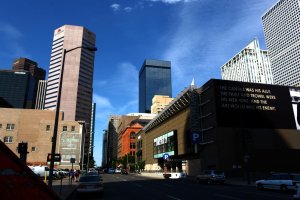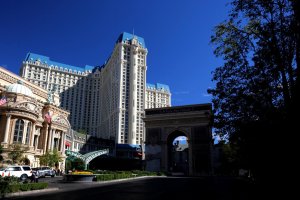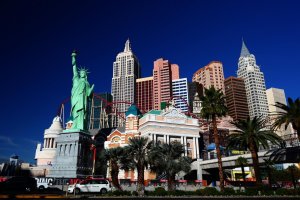I'm new to CPL. Bought a decent one (b+w xs-pro 82mm) and tried it the other day. I rotated the front such that my foreground appeared more saturated with less glare. What I noticed was that the sky was partially/unevenly darkened. I was not using an ultrawide lens. I was at 24mm. The sun was more or less over my right shoulder, 90 degrees to my camera axis. How can I saturate the sky more evenly? I'm sure it's a matter of technique and not a fault of my CPL, and I'm hoping someone could shed some light. Thanks for your help.
You are using an out of date browser. It may not display this or other websites correctly.
You should upgrade or use an alternative browser.
You should upgrade or use an alternative browser.
Tips for using CPL
- Thread starter sunnyVan
- Start date
It actually has to be a quite narrow focal to get full and even effect. What can help matters is to not turn the filter to the maximum effect, but more subtle.
And sometimes I polarize more on one side to avoid the big dark blimp in the middle of the blue sky. But often make a compromise between FL and the amount of pol applied.
It's REALLY nice with the 200mm as it is completely even. But my 2470 I follow the steps above.
And sometimes I polarize more on one side to avoid the big dark blimp in the middle of the blue sky. But often make a compromise between FL and the amount of pol applied.
It's REALLY nice with the 200mm as it is completely even. But my 2470 I follow the steps above.
Upvote
0
Viggo said:It actually has to be a quite narrow focal to get full and even effect. What can help matters is to not turn the filter to the maximum effect, but more subtle.
And sometimes I polarize more on one side to avoid the big dark blimp in the middle of the blue sky. But often make a compromise between FL and the amount of pol applied.
It's REALLY nice with the 200mm as it is completely even. But my 2470 I follow the steps above.
Ic. Thx, Viggo.
Upvote
0
That's one of the ironies of CPLs. An otherwise beautiful, wide-angle scene in which you'd love to have a bit better sky and it gets fouled because of the CPL, not enhanced. I know someone who is expert in using the CPL in wide-angle scenes, but I'll darned if I can duplicate what she does with it. 50mm and longer and I don't have much problem or if I limit the sky to one quarter or less of the image.
Upvote
0
If a bright sky is the main problem, a graduated ND filter might get you where you
Want.
Want.
Upvote
0
Viggo said:If a bright sky is the main problem, a graduated ND filter might get you where you
Want.
I use GND frequently. Using CPL is a new endeavor.
Upvote
0
F
flowers
Guest
There's a better technique than either GND or CPL for darkening the skies with wide-angles, but if you use it during daytime you need ND (not GND) filters. It's a technique from China: black card.
Upvote
0
flowers said:There's a better technique than either GND or CPL for darkening the skies with wide-angles, but if you use it during daytime you need ND (not GND) filters. It's a technique from China: black card.
Yes I've heard of the black card technique. I believe it originated from Taiwan. In my scenario I wanted to reduce glare on the foreground. My main purpose was not to darken the sky.
Upvote
0
F
flowers
Guest
sunnyVan said:flowers said:There's a better technique than either GND or CPL for darkening the skies with wide-angles, but if you use it during daytime you need ND (not GND) filters. It's a technique from China: black card.
Yes I've heard of the black card technique. I believe it originated from Taiwan. In my scenario I wanted to reduce glare on the foreground. My main purpose was not to darken the sky.
Yes, it's originally from Taiwan, China. Was the glare polarized? If it's water, you'll be at least able to cut it down with CPL. The amount of polarization is dependent on the angle. Have you tried moving your camera to a different angle?
Upvote
0
sunnyVan said:I'm new to CPL. Bought a decent one (b+w xs-pro 82mm) and tried it the other day. I rotated the front such that my foreground appeared more saturated with less glare. What I noticed was that the sky was partially/unevenly darkened. I was not using an ultrawide lens. I was at 24mm. The sun was more or less over my right shoulder, 90 degrees to my camera axis. How can I saturate the sky more evenly? I'm sure it's a matter of technique and not a fault of my CPL, and I'm hoping someone could shed some light. Thanks for your help.
It's uneven because the area near the sun will naturally be brighter. Nothing much you can do except shoot at a different time of day. GND will not solve the uneveness. You could recover highlight detail in the sky using software. I usually over expose the sky a little in favour of foreground then pull the sky back using a combination of highlights slider, curves and a grad filter tool if needed. Somtimes I might dodge and burn areas too. Use the HSL panel to tweek the blues back to a deep blue color. Adding a slight vignette also helps darken the sky. (This all works in conjuction with a CPL).
By doing it in post you have more control and can even it out a bit.
Btw how much of a difference are we talking about? A little is normal and natural for a landscape shot. Especially if there is a lot of sky in the shot. A plain blue sky of one tone is kinda boring anyway in my opinion.
Upvote
0
F
flowers
Guest
Zv said:Btw how much of a difference are we talking about? A little is normal and natural for a landscape shot. Especially if there is a lot of sky in the shot. A plain blue sky of one tone is kinda boring anyway in my opinion.
I have to agree, plain uniformly blue sky is just boring!
Upvote
0
In general, underexposing will give you more vibrant colors. So try underexposing by 1-2 stops, and you'll see more vibrant looking sky 
Upvote
0
surapon
80% BY HEART, 15% BY LENSES AND ONLY 5% BY CAMERA
sunnyVan said:I'm new to CPL. Bought a decent one (b+w xs-pro 82mm) and tried it the other day. I rotated the front such that my foreground appeared more saturated with less glare. What I noticed was that the sky was partially/unevenly darkened. I was not using an ultrawide lens. I was at 24mm. The sun was more or less over my right shoulder, 90 degrees to my camera axis. How can I saturate the sky more evenly? I'm sure it's a matter of technique and not a fault of my CPL, and I'm hoping someone could shed some light. Thanks for your help.
Dear SunnyVan.
Here are great Links for " How -To" CPL
http://www.cambridgeincolour.com/tutorials/polarizing-filters.htm
http://freephotocourse.com/how-to---dramatic-dark-sky-effect.html
Yes, I use B+W 82 KSM C-Pol MRC F-PRO filter with my dear Canon TS-E 24 mm. F/ 3.5 L MK II, with the sun locate at right side/ Left side of my shoulder ( 9-10 AM & 2-3 PM), and I get 100 Percent of beautiful Deep Blue sky . BUT Not for 11 mm Super Wide Angle Lens.
Enjoy.
Surapon
PS, Please see Photo 1765, You can see the shadow of the lady on the bridge = and know the angle of the sun at that time.
Attachments
Upvote
0
F
flowers
Guest
It's better to overexpose without blowing the highlights (see historgram, not the on-the-fly JPG preview) and recover and bring down the highlights in post.BoneDoc said:In general, underexposing will give you more vibrant colors. So try underexposing by 1-2 stops, and you'll see more vibrant looking sky
Upvote
0
flowers said:It's better to overexpose without blowing the highlights (see historgram, not the on-the-fly JPG preview) and recover and bring down the highlights in post.BoneDoc said:In general, underexposing will give you more vibrant colors. So try underexposing by 1-2 stops, and you'll see more vibrant looking sky
Not necessarily, overexposure and pulling, ETTR, will not give you the same kind of saturation a slight under exposure will, even after lowering exposure and upping saturation, try it with a nicely graduated sky, they look completely different.
When shooting statics the best thing to do by far is bracket the hell out of the exposure and shoot RAW, this will give you the absolute most processing flexibility now, and in the future.
Upvote
0
sunnyVan said:flowers said:There's a better technique than either GND or CPL for darkening the skies with wide-angles, but if you use it during daytime you need ND (not GND) filters. It's a technique from China: black card.
Yes I've heard of the black card technique. I believe it originated from Taiwan. In my scenario I wanted to reduce glare on the foreground. My main purpose was not to darken the sky.
What evidence do you have to support that very specific claim? I ask because it was being taught widely in Europe and the USA in the early 1970's, even I was taught it in a small town in the UK long before the Internet and easy access to specialized techniques. I don't believe for one second it hasn't been widely used since the dawn of photography, and that wasn't in Taiwan or mainland China.
Upvote
0
+1 on that, I'm sure it's been used forever - it's not exactly rocket science. I can't say I've used it much since I moved to shooting RAW many years ago.privatebydesign said:I don't believe for one second it hasn't been widely used since the dawn of photography, and that wasn't in Taiwan or mainland China.
As for CPL techniques, our buddies at Zeiss say that anything under 28mm (effective FOV) will cause uneven skies. I find that with lots of tweaking I can get good results at 24mm, but there's always some unevenness, even in they sky itself. Your best bet with wide lenses is to use the CPL for water scenes, forests, and compositions where you can avoid putting much sky in the frame, or just live with the results you can get. Shooting during golden hour or minimizing the effects of the CPL help as well.
Upvote
0
F
flowers
Guest
mackguyver said:+1 on that, I'm sure it's been used forever - it's not exactly rocket science. I can't say I've used it much since I moved to shooting RAW many years ago.privatebydesign said:I don't believe for one second it hasn't been widely used since the dawn of photography, and that wasn't in Taiwan or mainland China.
As for CPL techniques, our buddies at Zeiss say that anything under 28mm (effective FOV) will cause uneven skies. I find that with lots of tweaking I can get good results at 24mm, but there's always some unevenness, even in they sky itself. Your best bet with wide lenses is to use the CPL for water scenes, forests, and compositions where you can avoid putting much sky in the frame, or just live with the results you can get. Shooting during golden hour or minimizing the effects of the CPL help as well.
Depeding on the unevenness, you can fix this with black card too. Hold it for a shorter amount of time where the sky is darker to get a better result.
privatebydesign said:Not necessarily, overexposure and pulling, ETTR, will not give you the same kind of saturation a slight under exposure will, even after lowering exposure and upping saturation, try it with a nicely graduated sky, they look completely different.
When shooting statics the best thing to do by far is bracket the hell out of the exposure and shoot RAW, this will give you the absolute most processing flexibility now, and in the future.
Okay, I will try it! But I usually exposure bracket for scenes with a high DR anyway.
Ps. Everyone knows it was invented in TW, China... But I don't know when. Most camera/photography related things are invented in Asia, is it any wonder black card was too?
Upvote
0
flowers said:Ps. Everyone knows it was invented in TW, China... But I don't know when. Most camera/photography related things are invented in Asia, is it any wonder black card was too?
Hmm, me hopes you are playing........
http://en.wikipedia.org/wiki/History_of_photography
Upvote
0
Similar threads
- Replies
- 8
- Views
- 6K




